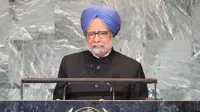IISc reseachers use innovative method to develop fatigue-resistant alloys
07 Mar 2025

Researchers at the Indian Institute of Science (IISc), Bengaluru have developed an innovative method for developing fatigue-resistant multi-principal element alloys (MPEAs), that would find new applications with further exploration.
MPEAs are a type of alloys composed of more than one part of the principal elements, and are used in applications needing more material strength. Traditionally, this is done through compositional modifications.
A team of researchers, led by Ankur Chauhan of IISC’s Department of Materials Engineering, explored the role of two critical microstructural features in enhancing the low-cycle fatigue (LCF) performance of alloys in Cr-Mn-Fe-Co-Ni alloys.
On synthesis of two single-phase face-centered cubic (FCC) MPEAs with distinct stacking fault effects (SFEs) by adjusting the Cr/Ni ratio, the researchers found the low-SFE alloy exhibiting 10–20 per cent higher cyclic strength than the high-SFE alloy, and with comparable fatigue life. This, according to the researchers, is due to the delayed evolution of dislocation substructures and a lower crack propagation rate in the low-SFE alloy.
A duel-phase alloy of a similar stacking developed by the team demonstrated a 50–65 per cent increase in cyclic strength over the single-phase low-SFE alloy, and with similar fatigue life.
Researchers attribute the enhanced fatigue resistance to finer dislocation structures, higher back stresses from reduced grain size, crack deflection by brittle σ-precipitates, and extensive deformation twinning around fatigue cracks. These facilitate slippages and thereby slows crack propagation.
The researchers hope to build on the findings to design both single-phase and dual-phase fatigue-resistant MPEAs, suitable for various structural applications. Further studies would help to dwelve deeper into deformation and damage mechanisms and understand how SFE and secondary brittle phases influence the mechanical properties of MPEAs.
The research is supported by the Anusandhan National Research Foundation, a statutory body set up by the central government.







.webp)














